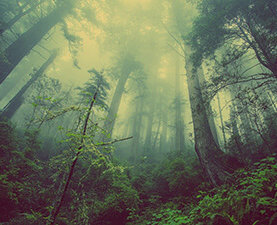Ephemeral flowers and insects — friends with benefits
It is springtime in Vermont and our forests are beginning to fill with green. While the growing season for trees is just beginning, spring ephemeral wildflowers on the forest floor are nearing the end of their short lives. “Ephemerals” like Hepatica, bloodroot, trout lily, Dutchman’s breeches, blue cohosh, spring beauties and wild leeks are so called because they live the majority of their lives in the brief (ephemeral) window between when the soil thaws and trees sprout leaves.

Ephemerals hold a special place in many forest-lovers’ hearts, both for their beauty and for their roles as harbingers of spring — the first flowers to bloom after a long winter. Besides being important in their own right, some of ephemerals’ most fascinating qualities are their enigmatic relationships with insects.
Dutchman’s breeches (Dicentra cucullaria) and squirrel corn (Dicentra canadensis) have unique flowers, similar to the closely-related domestic plant, bleeding heart (Dicentra spectabilis). 60 to 80 percent of Vermont’s plants rely on insects for pollination, and Dicentra is among them; their strange flowers are pollinated nearly exclusively by queen bumblebees.
Bumblebee colonies die each winter, leaving only a mated queen to emerge and start a new colony in the spring. The evolutionary relationship between bumblebees and Dicentra is such that the emergence of bumblebee queens is timed with the blooming of these flowers.
While bumblebees also visit other flowers, some insects rely on a single species. The spring beauty miner bee (Andrena erigeniae), one of Vermont’s more than 300 species of native bees, is a spring beauty specialist, visiting only tiny spring beauty (Claytonia virginica) flowers. The uncommon West Virginia white butterfly (Pieris virginiensis) is completely reliant on toothworts (Cardamine spp.) to complete their life cycle; while adults may get nectar from other flowers, their larvae can only grow on toothworts.
While bees and butterflies are our most famous pollinators, a variety of other insects also help our native plants reproduce. Rather than produce sweet-smelling flowers, wild ginger (Asarum canadense) and red trillium (Trillium erectum; also known as “wake robin” and “stinking Benjamin”) produce a gross smell which attracts gnats, beetles and flies foraging for rotting animals in the spring forest.
Many ephemerals also rely on some of our region’s more than 130 species of ants to disperse their seeds. Ephemeral species such as bloodroot (Sanguinaria canadensis), Trillium, Dicentra, spring beauty and wild ginger produce seeds with a fatty appendage called an elaiosome. Ants transport these seeds across the forest to their colonies, where they consume the elaiosomes and discard the seeds.
The presence of spring ephemerals in our forests is an incredible testament to their resilience. In a region whose forests have been about 80 percent cleared in the last 200 years, the fact that any of these ephemerals — and their insect associates — are here at all is nothing short of a miracle. But while they (like our forests) are resilient, they are also under threat.
The biggest threat to any forest plant, animal or tree is deforestation; Vermont is losing thousands of acres of forestland per year, and with them entire biological communities. Our remaining forests are increasingly fragmented, preventing plants and insects from colonizing new areas and creating islands of habitat within which populations of many species are vulnerable to local extinctions.
Besides deforestation, ephemerals and their insect associates must contend with many other threats embodied in our changed and changing world. High deer populations may browse these species to death, and non-native invasive plants like garlic mustard, buckthorn, honeysuckle and Japanese barberry form monocultures in the forest understory, displacing both ephemerals and the insects that rely on them. As our climate changes, the complex and delicate evolutionary relationships between insects and plants, like the timing of the emergence of queen bumblebees and the blooming of Dicentra, are under threat. The effects of these changes ripple up the food chain, impacting larger species like songbirds, mammals and, of course, ourselves.
Like so many parts of our forests, spring ephemerals and the insects that rely on them are unique, important and at risk. As our world changes around us, we must protect healthy, whole forests in the name of a functional and beautiful world — and to ensure that our grandchildren can enjoy these incredible wildflowers blooming in the understory of the spring forest.
(Ethan Tapper is the Chittenden County forester for the Vermont Department of Forests, Parks and Recreation. See what he’s been up to, check out his YouTube channel, sign up for his eNews and read articles he’s written.)

